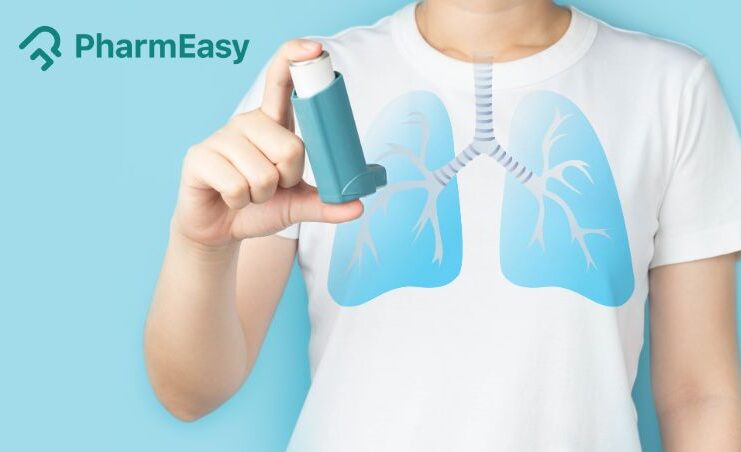Taking Control of Your Breath: Understanding Chronic Obstructive Pulmonary Disease (COPD)
By Dr. Nikita Toshi +2 more

Get,

to manage your symptom
Get your,


4 Cr+ families
benefitted

OTP sent to 9988776655



You’ve successfully subscribed to receive
doctor-approved tips on
Whatsapp

Get ready to feel your best.

Hi There,



Register to Avail the Offer
Send OTPBy continuing, you agree with our Privacy Policy and Terms and Conditions

Hi There,

Trusted by 4 crore+ families

OTP sent to 9988776655



You have unlocked 25% off on medicines




Code: NU25
By Dr. Nikita Toshi +2 more
Feeling breathless after climbing a flight of stairs or struggling to catch your breath during a simple walk – these experiences can be concerning. While there are many reasons for shortness of breath, Chronic Obstructive Pulmonary Disease (COPD) is a common culprit. This blog aims to empower you with knowledge about COPD, its symptoms, causes, and how to manage it effectively.
Table of Contents
COPD is a progressive lung disease that makes it difficult to breathe. It’s caused by long-term exposure to irritants that damage the lungs, primarily cigarette smoke. This damage narrows the airways (bronchi) and destroys the air sacs (alveoli) in the lungs, making it harder for air to flow in and out. While COPD is incurable, there are effective treatments and lifestyle changes that can help you manage the disease and live a fulfilling life.

The symptoms of COPD can develop gradually and worsen over time. Here are some of the most common ones:
Smoking is the leading cause of COPD. In fact, over 90% of people with COPD have a history of smoking. Other risk factors include exposure to secondhand smoke, air pollution, and occupational dust and chemicals.
If you experience any of the COPD symptoms mentioned above, it’s important to consult your doctor. They will conduct a physical exam, ask about your medical history, and may order tests such as:
While there is no cure for COPD, there are several ways to manage the disease and improve your quality of life. These include:
A diagnosis of COPD doesn’t mean you have to stop living your life. By understanding the disease, implementing the proper management strategies, and making healthy lifestyle choices, you can take control of your health and maintain an active and fulfilling life. Don’t hesitate to talk to your doctor about any questions or concerns you may have. They can work with you to create a personalized treatment plan that addresses your specific needs.
Disclaimer: The information provided here is for educational/awareness purposes only and is not intended to be a substitute for medical treatment by a healthcare professional and should not be relied upon to diagnose or treat any medical condition. The reader should consult a registered medical practitioner to determine the appropriateness of the information and before consuming any medication. PharmEasy does not provide any guarantee or warranty (express or implied) regarding the accuracy, adequacy, completeness, legality, reliability or usefulness of the information; and disclaims any liability arising thereof.
Links and product recommendations in the information provided here are advertisements of third-party products available on the website. PharmEasy does not make any representation on the accuracy or suitability of such products/services. Advertisements do not influence the editorial decisions or content. The information in this blog is subject to change without notice. The authors and administrators reserve the right to modify, add, or remove content without notification. It is your responsibility to review this disclaimer regularly for any changes.

Leave your comment...
Comments